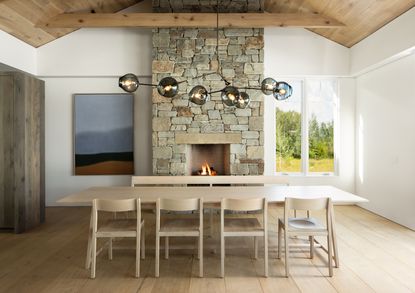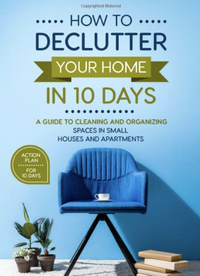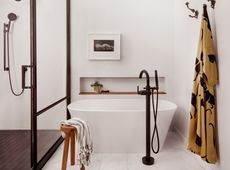What is the goal of minimalism? And how can it help you create the calm home life you crave?
Discover how the goal of minimalism can help you find clarity, calm, and value what matters

Throughout history, minimalist ideas have reappeared under various guises: from stoicism in ancient Greece through to today’s decluttering influencers like Marie Kondo. To some people, minimalism is a particular aesthetic, to others it’s a lifestyle, whereas for some it’s a design approach or philosophy.
But while minimalism in interior design can mean different things to different people, the goal of minimalism remains broadly the same: to find clarity, calm and value by living with less. Our design experts unpack this further below, and share their tips for creating a minimalist home.
What is the goal of minimalism?
1. Finding clarity

“For our practice, minimalism is not the solution,” says Brian Messana, co-founder and executive architect at Messana O'Rorke in New York. “It is the guise under which complexity is best hidden. Meaning, minimalism is not an aesthetic that's applied, rather, it is the result of carefully, thoughtfully, and meticulously evaluating and understanding the complexities of a project and organizing them into a seemingly simple solution.”
Through this process of simplification or reduction, we can find clarity and focus, ans this is why minimalism is a better way of life. “Minimalism to us is a focus on what is important,” says Kashi Shikunova, Director at London-based YAM Studios. “In our world, where we live very busy lives and are presented with an abundance of choices everywhere, we strongly believe a home should create a shelter for people where they can unwind, recharge and spend quality time with their loved ones.”
2. Creating calm

What is a minimalist lifestyle? Well, minimalist spaces should address our emotional needs for security and calm. “Warm materials and layered textures are key for minimalists as they will create a beautiful and inviting environment where people will feel comfortable and nurtured,” says Kashi Shikunova. “Warm minimalist spaces bring calmness and balance to people's minds, helping them unwind and recharge. A restrained palette, quality materials and functional storage are the key ingredients for achieving a simple and calm home.”
Kashi Shikunova adds that texture, warm neutrals and layers of lighting can help create calm, a quality the best minimalist houses have in droves. “Avoid using flat shiny materials,” she says. “Matt textured materials will add depth to the space. Warm neutral colors will add a calm, inviting feeling, and layers of lighting will bring a deep, cozy atmosphere to your home where you can feel balanced.”
Brian Messana agrees that whether you're creating a minimalist living room or entire home, the goal should always be to create a “sanctuary”. He explains: “When we create a space, our goal is to reduce the visual noise/distraction to a minimum, focusing your attention on size, scale, materials, texture, light, shadow, order, and volume. Our spaces are designed to be a place of refuge, sanctuary, or a retreat. Places to disconnect, to find beauty and freedom.”
3. Valuing what we have

What is minimalism today, and why is it important? Because as well as making us feel better personally, minimalism can have social and environmental benefits. “In our opinion, society over-consumes to a point where almost nothing has long-lasting value. Everything is disposable,” says Brian Messana. “Our work is not about minimalism as a style, fad, or a way of life. For us, Minimalism is placing value and importance on what we have. It is not about quantity, rather, it is about quality. “Less is MORE”, places greater value on what we have.”
Kashi Shikunova adds that minimalism can help avoid unnecessary waste and excess. “High-quality materials and craftsmanship, combined with the practical considerations of day-to-day life, will result in homes that last longer and work better for people,” she says.
So, where do we start?

If you like the sound of a more calming, focused home, the good news is anyone can create a minimalist space.
The first step must involve an audit of your stuff - or follow our guide for how to organize your home in 30 days. Brian Messana explains: “Take a look around your house and identify what items you see that are important, have meaning, and bring value and happiness into your life. This survey ranges from furnishings to furniture. Separate the important from the non-important, and put all the non-important items away. Finally, arrange the items you have left in a way that focuses attention on them, bringing their importance into perspective.”
You can then design your space around the objects that are most important to you. “Start to think about how your home needs to work for you,” says Kashi Shikunova. “Think about where you can add practical storage so all your belongings have a specific place. Also, consider which belongings you’d like to display—these should be the most cherished items you own, items that make you feel good. Then compliment these items with a restrained palette of beautiful materials.”
Sorting through all your possessions might sound like hard work, but with minimalism promising multiple personal, social and environmental benefits, it will no doubt be worth it.

Declutter Your Home in 10 Days by Stacy Collins, Amazon
This brilliant book makes acheiving the goals of minimalism not just easy, but fun. Stacy Collins holds your hand through the tricky bits and will inspire you to get the job done. A calm, ordered life will be yours.
Be The First To Know
The Livingetc newsletter is your shortcut to the now and the next in home design. Subscribe today to receive a stunning free 200-page book of the best homes from around the world.
Kate Hollowood is a freelance journalist who writes about a range of topics for Marie Claire UK, from current affairs to features on health, careers and relationships. She is a regular contributor to Livingetc, specializing in reporting on American designers and global interiors trends. Based in London, Kate has also written for titles like the i paper, Refinery29, Cosmopolitan and It’s Nice That.
-
 People With Spa Bathrooms Will Likely Have These 8 Things — Get the Look With Our Checklist
People With Spa Bathrooms Will Likely Have These 8 Things — Get the Look With Our ChecklistHomeowners with spa-like bathrooms typically have these seven things, how many do you have?
By Oonagh Turner Published
-
 7 Vegetables You Can Plant in February – Our Favorite Varieties That Can be Either Sown or Planted Outdoors Now
7 Vegetables You Can Plant in February – Our Favorite Varieties That Can be Either Sown or Planted Outdoors NowGet planting these easy salad and vegetable varieties now and you will soon have plenty of fresh early spring crops
By Sarah Wilson Published

